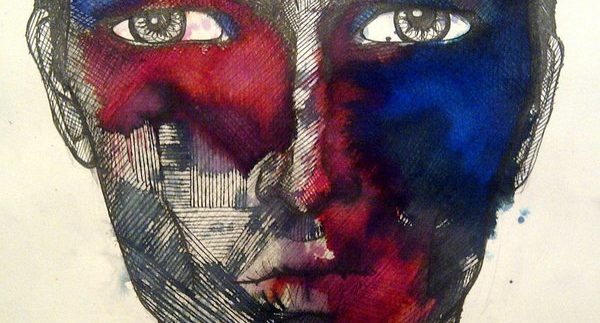Shy by nature, Hassan Hassan uses his creative expression to reveal a much more vivacious and cheeky character than initially meets the eye. Soft tempered in person and constantly on the verge of laughter, his artistic talents have slowly but surely been on the rise over the past few years. Labelling Hassan as an ‘artist’ seems inaccurate, though; not because he hasn’t earned it or because he doesn’t personally like it, but rather because it doesn’t do him justice. It’s somewhat one dimensional and Hassan is anything but that.
He describes his childhood self as a “cookie cutter of a Gulfie kid”, where he attended a British school in Saudi Arabia only to eventually move back and attend the American University in Cairo and study Mass Communications. Moving to Cairo after such a sheltered upbringing had its effects; a weakened grasp on the language and a sudden fish out of water reality afforded him a unique perspective. He credits much of his inspiration not only to obvious things like Sufi dancers, but more to the contradictions, the kitsch, the shabbiness and the strange appeal found in all those things. “Contradiction has been at the forefront of everything in life; not just art” he says, unapologetically.
In taking steps towards becoming an illustrator, Hassan began with sketches and doodles that looked like they belonged to a fashion student; watercolour markers, simple lines and bold written statements created eye-catching, striking, and sometimes humorous, images.
The undeniable allure of his work was quickly noticed by his peers and riding on encouragement from friend and fellow artist, Dina Sabet, he eventually went ahead with two solo exhibitions titled ‘Three’ and ‘Monster’ in 2010 at Studio 14. He was also commissioned by
Zimmer to design limited edition carpets. Over 2011 and 2012, Hassan participated in two group exhibitions, at Tache Art Gallery and Cala Art Gallery, as well as produced a capsule collection for the
Pink Powder Room.
Apart from Cairo’s influences, he names Lichtenstein and Warhol as inspirations as well – both of which are apparent in his work. Voluptuously lipped women with despair in their eyes and dramatic speech bubbles as well as the poster-like quality of his work speak both of these famed artists’ creative languages.
Recently, Hassan’s work has matured and evolved. While he remains true to his initial style, we are seeing the use of more sultry colours, more distinct motifs and overall refinement to his pieces. The usual collage of words and statements thrown about all over the paper are less utilised; the bright, almost neon, colours have been handed in for deeper reds, royal blues and overall more poignant hues, splashed and melted as opposed to coloured inside the lines.
Those who produce art often have a driving passion behind it – whether it be positive or negative. However Hassan has previously stated that he draws for the sake of drawing and that whenever he attempts to carry out something in mind it doesn’t work and therefore prefers to make a conscious effort “to be as unconscious with it as possible”. His creative process is somewhat mindless and the images take form almost accidentally, and as he said, unconsciously.
“Materials are the easiest way to progress and experiment”, Hassan says and lately he’s fallen into the watercolour realm and enjoys it because of its unpredictable nature, producing spontaneous results. He further explains that, “it’s always the little mistakes that add to things.”
Having broken out of his shell more, Hassan can still be a little bashful. “It will always be a little shocking when people are interested [in his work]” he admits. Buying one of his pieces is the biggest compliment you could pay him. What irks him most, though, is being asked questions that he doesn’t have answers to; how long it takes him to complete a drawing or about the meanings of his pieces, and in trying to understand something he himself cannot explain, Hassan says a “vicious circle of awkward moments” ensues. However, he goes on to say that “a thick skin and a little patience are par for the course with anything you do in life, art or otherwise.”
While Hassan explains that it would have been hypocritical of him to
have taken part in the surge of revolutionary art since the uprising,
seeing as he was never involved in it, he praises Ganzeer and Keizer’s
work; “From an aesthetic perspective, it stands alone regardless of the
context/message”.
‘Success’ is difficult to define according to Hassan. He interestingly doesn’t regard it as the ultimate goal but rather as a plateau, with the question of ‘where do we go from here?’ attached to it. “You’re successful when you’re dead”, he says with complete confidence. Where would he like to be in ten years from now? He can’t even begin to plan it. “I’d like to be a little more relaxed, a little more established and hopefully not wondering where the past ten years went.”
You can see Hassan Hassan’s latest capsule collection at Dina Maghawry’s
opening night in Zamalek, on Wednesday October 17th which will feature a variety of work from over the past two years, focused mainly on portraits and fashion inspired pieces.

 Cafés
Cafés
 City Life
City Life



